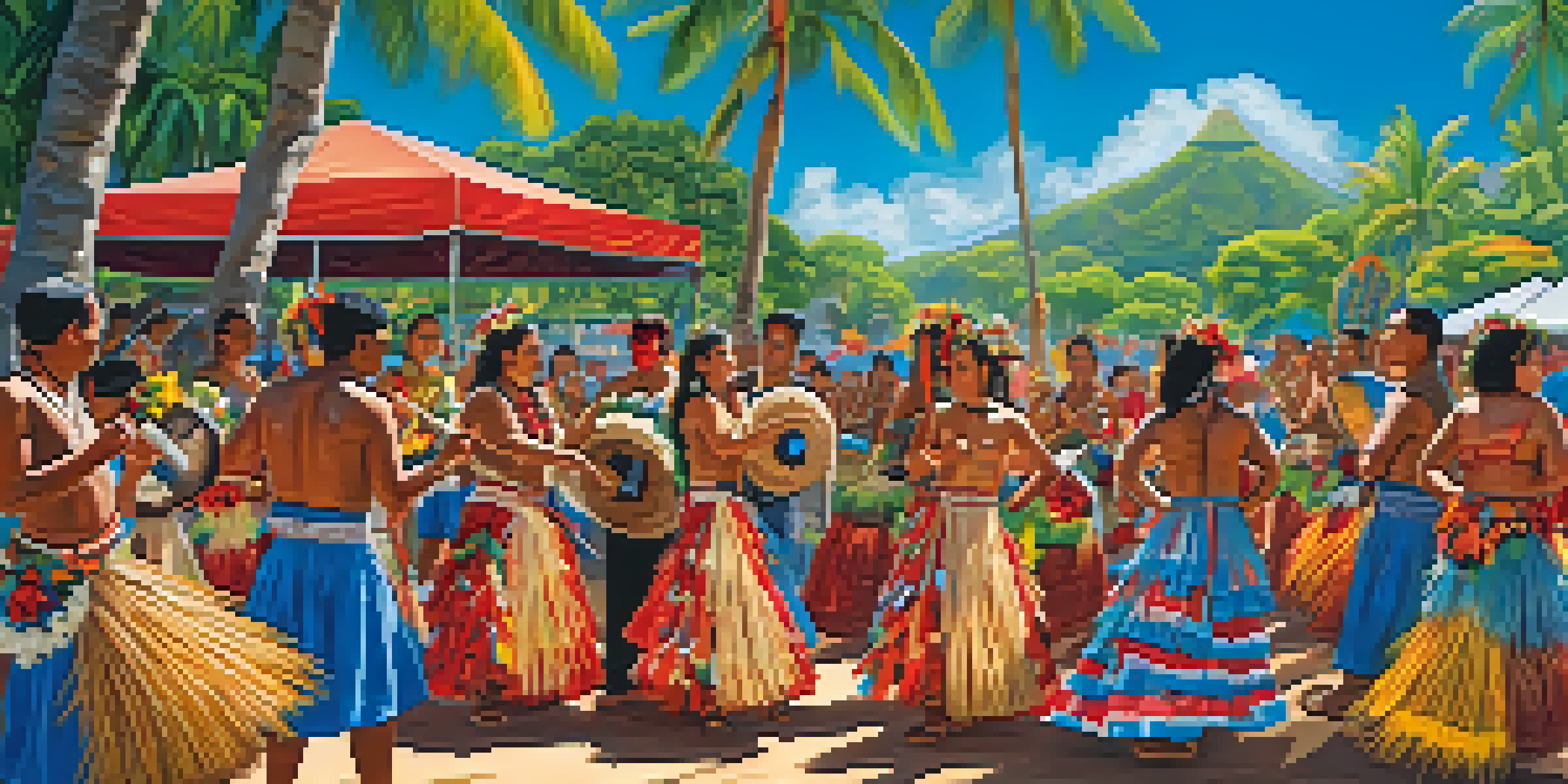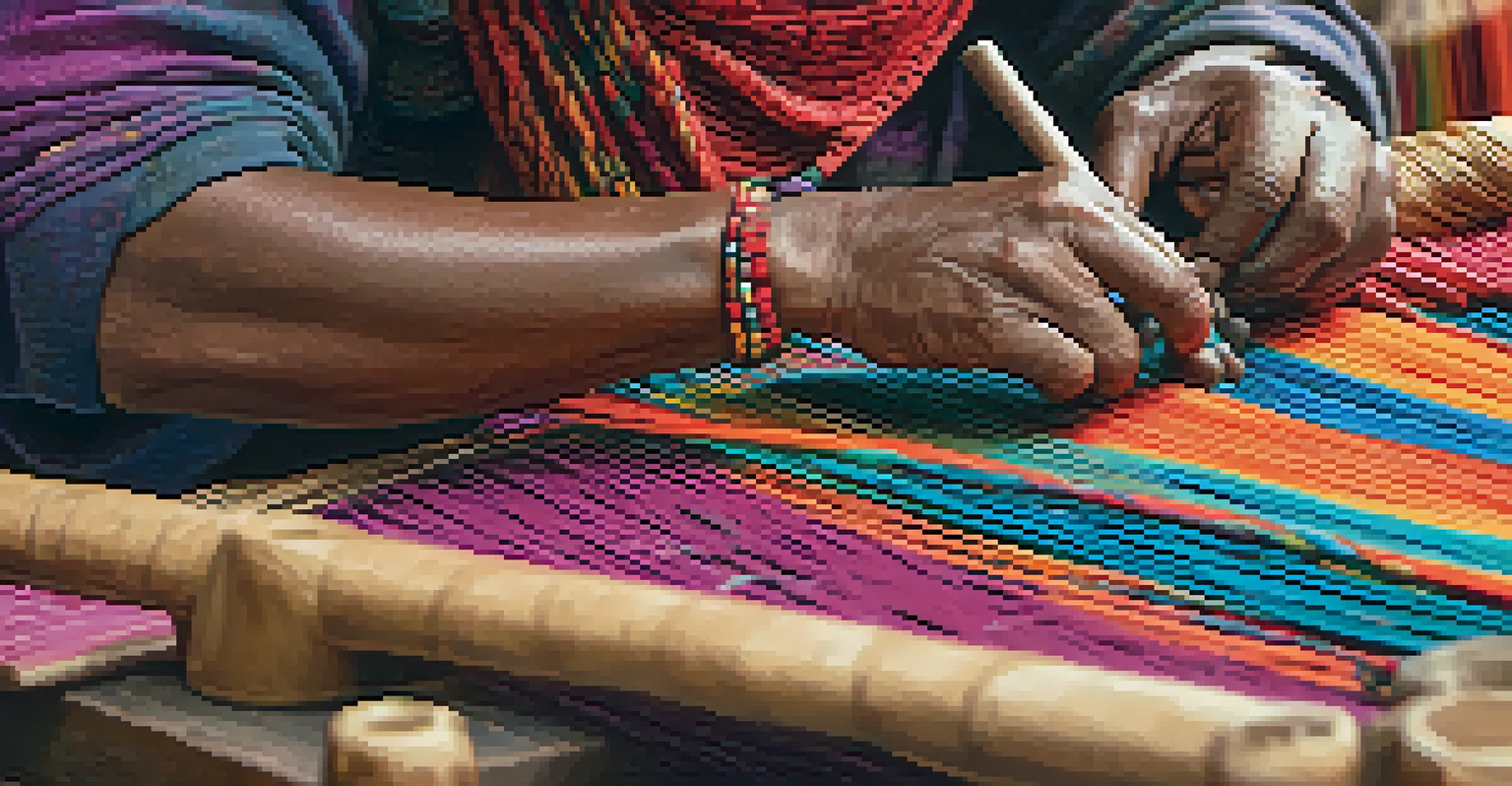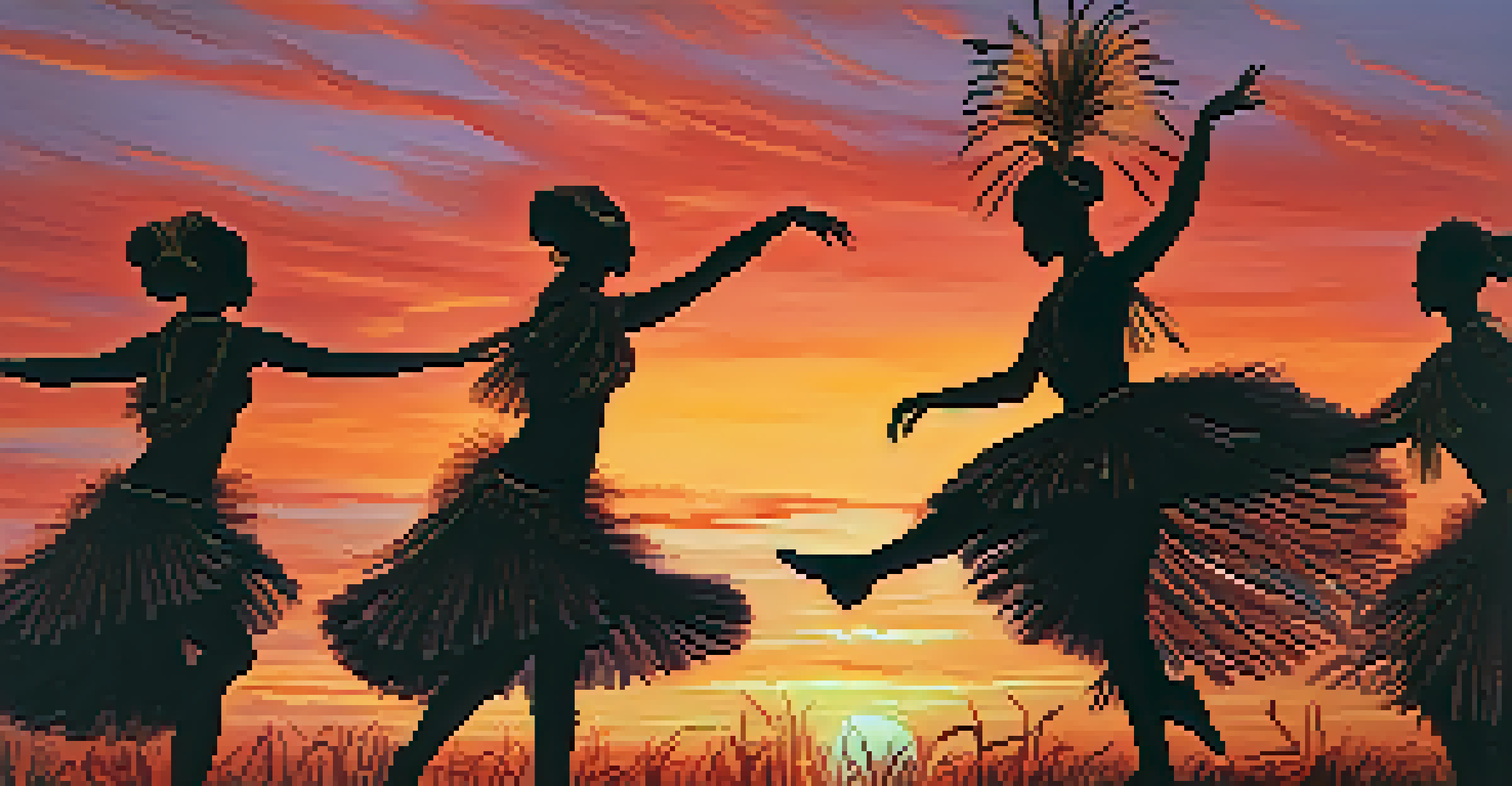Oahu's Festival of Pacific Arts: Cultural Exchange and Unity

What is the Festival of Pacific Arts and Its Purpose?
The Festival of Pacific Arts is a vibrant celebration that showcases the rich cultural heritage of the Pacific Islands. This biennial event brings together artists, performers, and community members from various Pacific nations to share their traditions and arts. The festival aims to promote cultural exchange and unity by highlighting the diverse practices that exist within the Pacific region.
Culture is the widening of the mind and of the spirit.
Held in different locations around the Pacific, the festival serves as a platform for preserving and promoting indigenous cultures. Each gathering allows participants to engage in workshops, performances, and exhibitions that foster creativity and cultural understanding. It's a unique opportunity for locals and visitors alike to immerse themselves in the beauty of Pacific arts.
Through storytelling, dance, music, and crafts, the festival not only celebrates heritage but also reinforces the importance of community and connection among the islands. By sharing their unique cultures, participants contribute to a greater appreciation for the diversity that exists across the Pacific.
The History and Evolution of the Festival
The Festival of Pacific Arts was first held in 1972, initiated by the South Pacific Commission as a means to encourage cultural exchange. Over the years, it has grown significantly, with more nations participating in each edition. This evolution reflects the increasing importance of cultural preservation in the face of globalization and modern influences.

Originally focused on traditional arts, the festival has expanded to include contemporary interpretations, allowing for a blend of old and new. This evolution helps to keep the arts relevant, ensuring that younger generations feel connected to their cultural roots. As artists explore new mediums and styles, they enrich the festival's offerings and engage a broader audience.
Cultural Exchange at Its Heart
The Festival of Pacific Arts fosters collaboration among artists and participants, promoting a deeper understanding of diverse cultures through shared performances and workshops.
Each festival is hosted by a different Pacific nation, providing an opportunity for that country's culture to shine. This rotation not only spreads awareness of various cultures but also strengthens ties among the nations involved, creating a network of support and shared experiences.
Cultural Exchange: The Heart of the Festival
At its core, the Festival of Pacific Arts is about cultural exchange. Artists, musicians, and dancers come together to share their talents and learn from one another, fostering a spirit of collaboration. This exchange enriches the participants' understanding of each other's cultures while providing audiences with a unique opportunity to witness diverse performances.
The arts are the most beautiful of all lies, and the most dangerous of all truths.
Workshops play a vital role in this cultural exchange. Attendees can learn traditional crafts, music, and dance forms from various Pacific nations, gaining hands-on experience that deepens their appreciation for these art forms. Such interactions create lasting connections between participants and promote an understanding of the similarities and differences that define each culture.
This emphasis on cultural exchange helps combat the homogenization of cultures that often occurs in today's globalized world. By sharing traditions and practices, the festival nurtures a sense of pride and identity among participants, ensuring that unique cultural narratives continue to thrive.
Artistic Highlights of the Festival
The Festival of Pacific Arts features a rich tapestry of artistic expressions, from traditional hula performances to contemporary visual arts. Each edition showcases the talents of local and international artists, providing a platform for them to present their work. These artistic highlights not only entertain but also educate audiences about the cultural significance behind each performance.
In addition to dance and music, the festival often includes traditional crafts, such as weaving, carving, and tattooing. These crafts, passed down through generations, are more than just art; they are stories and histories encapsulated in tangible forms. Attendees can often witness artisans at work, offering a glimpse into the painstaking processes that create these beautiful pieces.
Empowering Local Communities
Community involvement is essential to the festival, empowering local artists and strengthening cultural pride while encouraging collaboration and ownership of heritage.
Moreover, the festival often features exhibitions that delve into the history and evolution of Pacific arts. Through these displays, visitors gain insights into the influences and inspirations that shape contemporary practices, bridging the gap between past and present.
Community Involvement and Empowerment
Community involvement is a cornerstone of the Festival of Pacific Arts. Local communities are encouraged to participate, ensuring that the festival remains rooted in the cultural fabric of the host nation. This involvement not only empowers local artists but also fosters a sense of ownership and pride in cultural heritage.
Volunteers often play a crucial role in the festival's success, assisting with various logistics and helping facilitate workshops and performances. By engaging community members, the festival strengthens social ties and encourages collaboration among diverse groups. This sense of unity enhances the overall experience for both participants and attendees.
Furthermore, the festival often includes discussions and forums on cultural preservation and sustainability. These conversations empower communities to take an active role in safeguarding their cultural heritage for future generations. By recognizing the value of their traditions, communities are motivated to keep their arts alive and thriving.
The Impact on Tourism and Local Economies
The Festival of Pacific Arts has a significant impact on tourism and local economies. By attracting visitors from around the world, the festival provides a boost to the local economy through increased spending on accommodations, dining, and cultural experiences. This influx of tourists not only benefits local businesses but also raises awareness of the host nation's culture and traditions.
Moreover, the festival offers a unique opportunity for local artisans and vendors to showcase their crafts and products. By participating in the event, they can reach a broader audience, potentially leading to increased sales and recognition. This exposure can have a lasting impact on their businesses, encouraging them to continue practicing and sharing their art.
Boosting Tourism and Economies
By attracting global visitors, the festival significantly impacts local economies, enhancing awareness of cultural traditions and providing opportunities for artisans to showcase their work.
However, the benefits of the festival extend beyond immediate economic gains. By fostering cultural pride and attracting visitors, the event helps to nurture a sustainable tourism model that values authenticity and respect for local cultures. This approach ensures that tourism supports rather than undermines the cultural integrity of the host community.
Future of the Festival: Challenges and Opportunities
As the Festival of Pacific Arts looks to the future, it faces both challenges and opportunities. One of the primary challenges is the ongoing impact of globalization, which can threaten the preservation of traditional practices. However, this also presents an opportunity for artists to innovate and adapt, creating new forms of expression that resonate with contemporary audiences.
Another challenge is ensuring that the festival remains accessible and inclusive to all Pacific cultures. As more nations participate, it’s essential to maintain a balance that honors each culture's unique contributions while promoting unity among diverse groups. This requires ongoing dialogue and collaboration among participating nations.

Despite these challenges, the future of the festival is bright. With a renewed focus on sustainability, community involvement, and cultural exchange, the Festival of Pacific Arts is poised to continue its legacy of celebrating and preserving the rich tapestry of Pacific cultures for generations to come.